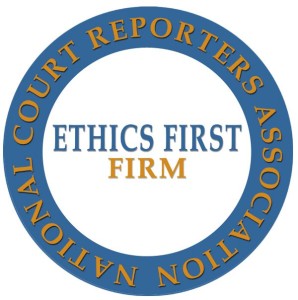Expanding the Notion of “Women’s Work” in Court Reporting
Stenography (noun): The process of writing in shorthand (transcribing) or taking dictation of an event, interview, conversation, etc.
Stenography has had a long history in the United States. Used as a form of record keeping, stenography began to take hold as a career around the turn of the 20th century. Thirty years later, stenography and typing transcription services had flooded the market as appropriate employment for women. According to a University of Washington study published in the 2010 Journal of Social History, by 1910, 77 percent of stenographers listed in the U.S. census were women.
As the demand for transcription services increased, stenography typing machines evolved to accommodate the “nimble fingers” of women in order to produce faster output, and take advantage of the female workforce. At first, labeling such clerical transcription duties as “women’s work” allowed employers to save money by paying women less.
Strangely, even as women’s equality and women’s rights advanced, transcription careers remained dominated by women. However, just as the stenography machines evolved, women have expanded the role of stenographers into three separate categories: court reporting, captioning, and freelance transcription creation.
The Evolution of Stenography
When you think of stenography, what do you picture?
Those with little experience may imagine a 1950s-style secretary sitting at a courtroom desk banging on a typewriter. Those with experience may see a woman diligently performing an archaic tradition that could easily be replicated by a computer—in this technological day and age, stenography may seem a little outdated. However, what you may not realize is that skillful stenography requires a lot of attention, fortitude, and diligence, especially in areas pertaining to the law. This is why skilled transcriptionists such as Mirabai Knight, Tammy Frazier, and Lisa Knight have paved the way for female and male stenographers alike to evolve with the times and explore new roles. These roles not only advance careers, but also help others get the organized transcripts they may not even know they need:
- Court Reporters are responsible for the accurate transcription and editing of civil, criminal, and trial cases as well as depositions. During some depositions, court reporters may also be responsible for swearing in witnesses and handing off documentation to witnesses.
- Caption and Computer Assisted Realtime Transcription Providers (CART). CART providers are responsible for immediately and accurately (98% accuracy is expected) transcribing lectures and meetings for hearing-impaired students and professionals. Captioning providers must also retain a 98% accuracy level while creating subtitles and closed captioning for hearing-impaired broadcast TV, news, and film viewers.
- Freelancers. Court reporters who travel the world working for America’s biggest law firms are responsible for producing accurate trial and case transcriptions in a realtime atmosphere. They cannot rely on notes or editing.
For more information on court reporting or how we can help you find the right reporter for your case, give us a call at (703) 837-0076 or contact us today.

